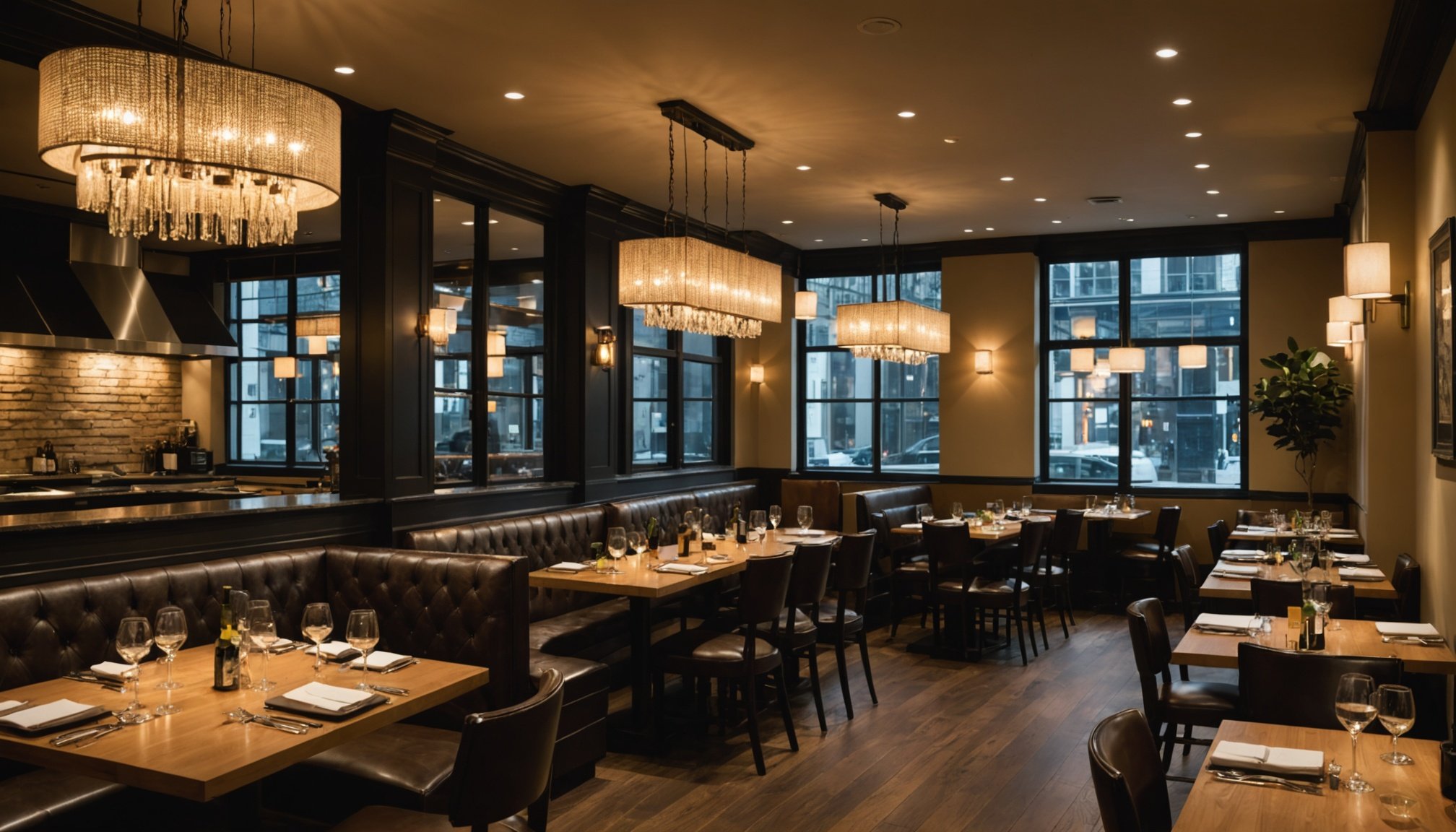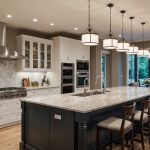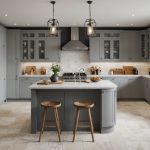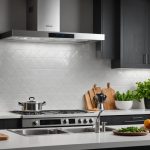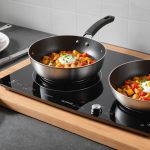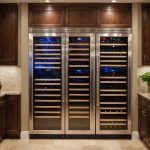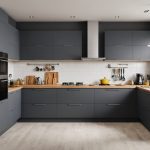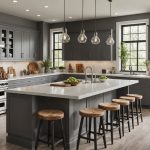How Lighting Sets the Mood: The Key Role in Enhancing the Atmosphere of Casual Dining Restaurants
When it comes to creating an inviting and memorable dining experience, several elements come into play, but one of the most critical is lighting. In casual dining restaurants, lighting is more than just a necessity; it is a powerful tool that sets the mood, influences the ambiance, and enhances the overall experience for customers. Here’s a deep dive into how lighting can transform your restaurant into a welcoming and engaging space.
The Psychology of Lighting: Understanding Its Impact
Lighting has a profound psychological impact on how customers perceive and experience a restaurant. Different types of lighting can evoke various emotions and create distinct atmospheres.
Additional reading : Key considerations for designing a sustainable restaurant: a guide to eco-friendly spaces
Warm vs. Cool Colors
Warm colors, such as those produced by incandescent bulbs or LED lights with a warm color temperature, can create a cozy and inviting atmosphere. These lights are ideal for casual dining settings where the goal is to make customers feel comfortable and relaxed. For instance, a warm glow can stimulate appetite and create a lively atmosphere, making it perfect for family-friendly restaurants or diners.
On the other hand, cool colors, often associated with fluorescent or LED lights with a cool color temperature, can create a calm and serene environment. These lights are more suited to fine dining or upscale restaurants where a relaxed and sophisticated ambiance is desired.
Also read : Expert Insights: Crafting a Stunning and Functional Bar Layout for Maximum Impact
Types of Lighting: Creating the Perfect Ambiance
In restaurant design, there are several types of lighting that work together to create the perfect ambiance.
Ambient Lighting
Ambient lighting provides the general illumination of the space. It sets the overall mood and ensures that the restaurant feels welcoming. Soft, warm ambient lighting can make a space feel cozy and inviting, while bright, cool ambient lighting can make it feel energetic and lively. For example, pendant lights or recessed lighting can be used to create a comfortable level of brightness that makes guests feel relaxed.
Accent Lighting
Accent lighting is used to highlight specific areas or features within the restaurant, such as artwork, architectural details, or the bar area. It adds depth and dimension to the space, enhancing the overall aesthetic. For instance, using uplighting or fairy lights can draw attention to certain elements and create a more engaging atmosphere.
Task Lighting
Task lighting is focused on specific areas where tasks are performed, such as the dining tables or the kitchen. Table lamps or under-cabinet lighting can provide the necessary illumination for customers to enjoy their meals comfortably. This type of lighting ensures that the food is well-lit, making it more appetizing and enhancing the dining experience.
Designing the Lighting Plan: Practical Tips and Considerations
When designing a lighting plan for your restaurant, several factors need to be considered to ensure that the lighting enhances the atmosphere and meets the needs of your customers.
Natural Light
Natural light can significantly enhance the ambiance of a restaurant, especially during the day. However, it's important to balance natural light with artificial lighting to maintain a consistent atmosphere throughout the day. For example, using sheer curtains or blinds can help control the amount of natural light entering the space and prevent it from becoming too harsh.
Lighting Fixtures
The choice of lighting fixtures can greatly impact the ambiance of your restaurant. Here are some popular options:
- Pendant Lights: These can add a stylish touch and provide focused lighting over tables or bars.
- Table Lamps: These are ideal for task lighting and can create a cozy, intimate atmosphere.
- Wall Lights: These can be used to create ambient lighting and add a decorative element to the space.
- Floor Lamps: These can be used in corners or near seating areas to create pools of light and enhance the ambiance.
- Track Lighting: This is versatile and can be used for both ambient and accent lighting.
- Ceiling Lights: These can provide overall illumination and are often used in combination with other types of lighting.
Creating Zones with Lighting
Dividing the restaurant into different zones using lighting can enhance the customer experience by providing distinct areas for different purposes.
Dining Areas
In dining areas, warm and soft lighting can create a welcoming atmosphere. Using table lamps or pendant lights can ensure that each table is well-lit, making the dining experience more enjoyable.
Bar Areas
The bar area can benefit from brighter, more energetic lighting to create a lively atmosphere. Accent lighting can be used to highlight the bar itself and any decorative elements.
Waiting Areas
Waiting areas can be made more comfortable with soft, ambient lighting. This can help reduce the perceived wait time and make the experience more pleasant for customers.
Outdoor Lighting: Extending the Ambiance
For restaurants with outdoor seating, especially rooftop dining spaces, outdoor lighting is crucial for extending the ambiance into the evening.
Weather Considerations
When designing outdoor lighting, it's essential to consider the weather. Using umbrellas or shades can protect customers from the sun during warm weather, while outdoor heaters and canopies can make the space usable during cooler or rainy months.
Incorporating Greenery
Adding greenery to outdoor spaces can make them feel more inviting and refreshing. Potted plants, hanging vines, or small trees can give the area a natural touch, enhancing the overall ambiance.
Case Study: Successful Lighting Design in Restaurants
To illustrate the impact of effective lighting design, let's look at a case study of a successful casual dining restaurant.
Example: A Coastal-Themed Restaurant
A coastal-themed restaurant in a bustling city wanted to create a welcoming and relaxed atmosphere. Here’s how they used lighting to achieve this:
- Ambient Lighting: Soft, warm pendant lights were used to create a cozy ambiance throughout the dining area.
- Accent Lighting: Uplighting was used to highlight nautical elements and artwork, adding depth and dimension to the space.
- Task Lighting: Table lamps with warm-toned shades were used to provide focused lighting over each table.
- Outdoor Lighting: The rooftop dining area was equipped with string lights and fairy lights to create a magical and intimate atmosphere in the evening.
This combination of lighting types created a seamless and inviting atmosphere that aligned perfectly with the coastal theme, making the restaurant a favorite among locals and visitors alike.
Table: Comparing Different Types of Lighting
Here is a comparative table highlighting the different types of lighting and their uses in restaurant design:
| Type of Lighting | Description | Use in Restaurant |
|---|---|---|
| Ambient Lighting | General illumination of the space | Creates overall mood and atmosphere |
| Accent Lighting | Highlights specific areas or features | Adds depth and dimension to the space |
| Task Lighting | Focused lighting for specific tasks | Ensures adequate lighting for dining and other tasks |
| Natural Light | Light from the sun | Enhances ambiance during the day |
| Pendant Lights | Suspended lights above tables or bars | Adds a stylish touch and provides focused lighting |
| Table Lamps | Lamps placed on tables | Creates a cozy, intimate atmosphere |
| Wall Lights | Lights mounted on walls | Provides ambient lighting and decorative element |
| Floor Lamps | Lamps placed on the floor | Creates pools of light and enhances ambiance |
| Track Lighting | Adjustable lights on a track | Versatile for both ambient and accent lighting |
| Ceiling Lights | Lights mounted on the ceiling | Provides overall illumination |
Quotes from Experts
- "Lighting is a fundamental component of restaurant ambiance. It sets the mood and can greatly influence a diner’s perception and comfort level." – [Source: The Critical Role of Ambiance in the Dining Experience]
- "The right color combination for your restaurant can set the stage for a memorable dining experience. By understanding the impact of colors on emotions and behaviors, you can craft a space that not only looks beautiful but also enhances the overall enjoyment of your patrons." – [Source: Choosing the Right Colors to Enhance Your Restaurant Ambiance]
- "Lighting design often takes inspiration from local festivals and traditions. Lanterns, candles, and artistic light fixtures can add drama and intrigue to the space." – [Source: Restaurant Interior Design in Bangladesh]
Practical Advice for Restaurant Owners
Here are some practical tips for restaurant owners looking to enhance their dining atmosphere through lighting:
- Test Your Lighting: Before finalizing your lighting design, test your chosen lights in different scenarios to ensure they create the desired ambiance.
- Balance Natural and Artificial Light: Ensure that natural light is balanced with artificial lighting to maintain a consistent atmosphere throughout the day.
- Consider Color Temperature: Choose lights with the right color temperature to match the intended mood of your restaurant.
- Use Lighting to Guide Flow: Use lighting to guide customers through the restaurant, creating a welcoming atmosphere in the entryway and softer hues in dining areas.
- Invest in Quality Fixtures: Invest in high-quality lighting fixtures that are durable and easy to maintain.
Lighting is not just a functional element in restaurant design; it is a powerful tool that sets the mood, influences the ambiance, and enhances the overall dining experience. By understanding the different types of lighting, considering the psychological impact of light, and designing a thoughtful lighting plan, restaurant owners can create a space that is not only visually appealing but also inviting and memorable for their customers. Whether you are designing a new restaurant or revamping an existing one, paying attention to lighting can make all the difference in creating an unforgettable dining experience.

